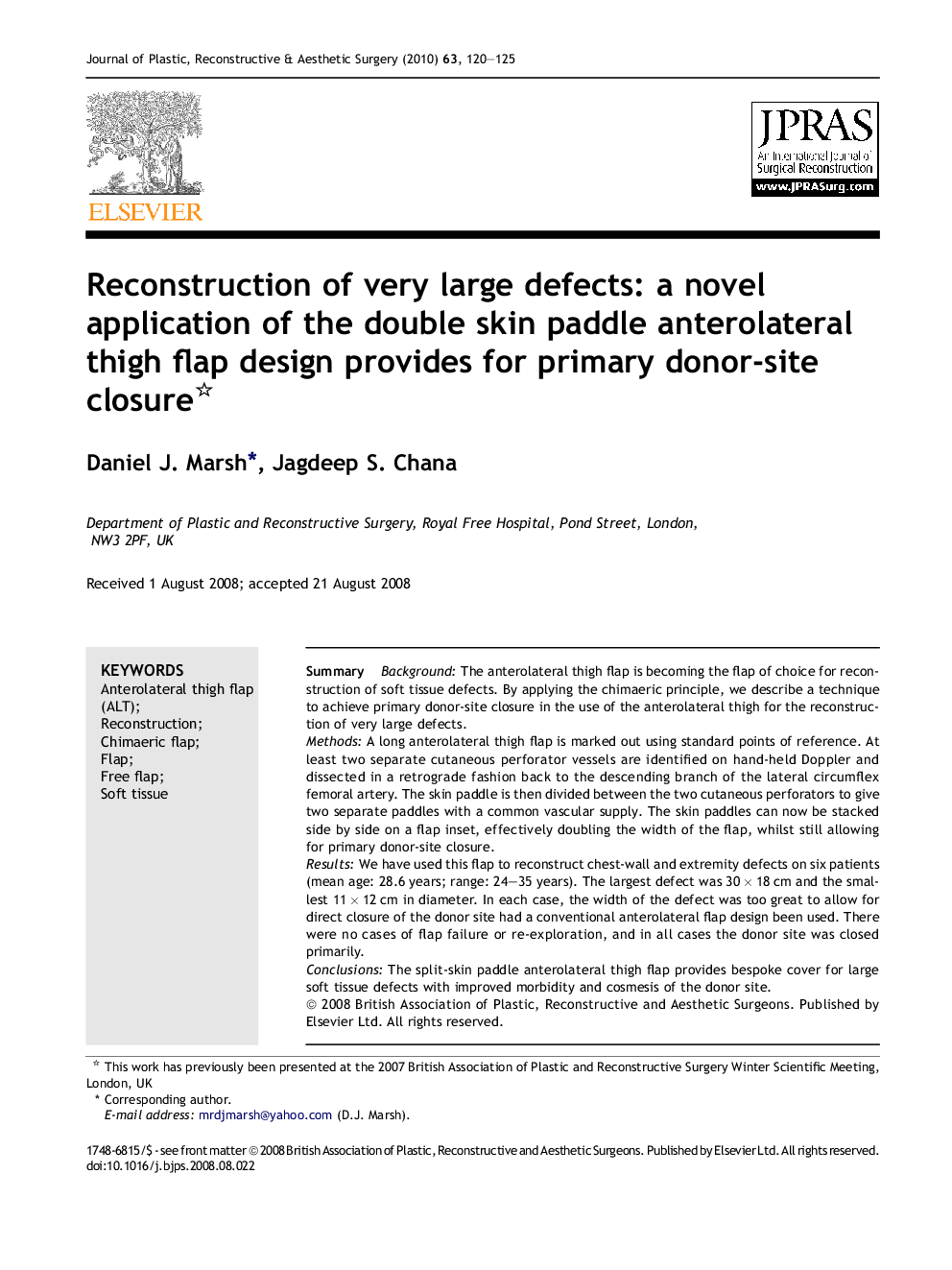| Article ID | Journal | Published Year | Pages | File Type |
|---|---|---|---|---|
| 4121317 | Journal of Plastic, Reconstructive & Aesthetic Surgery | 2010 | 6 Pages |
SummaryBackgroundThe anterolateral thigh flap is becoming the flap of choice for reconstruction of soft tissue defects. By applying the chimaeric principle, we describe a technique to achieve primary donor-site closure in the use of the anterolateral thigh for the reconstruction of very large defects.MethodsA long anterolateral thigh flap is marked out using standard points of reference. At least two separate cutaneous perforator vessels are identified on hand-held Doppler and dissected in a retrograde fashion back to the descending branch of the lateral circumflex femoral artery. The skin paddle is then divided between the two cutaneous perforators to give two separate paddles with a common vascular supply. The skin paddles can now be stacked side by side on a flap inset, effectively doubling the width of the flap, whilst still allowing for primary donor-site closure.ResultsWe have used this flap to reconstruct chest-wall and extremity defects on six patients (mean age: 28.6 years; range: 24–35 years). The largest defect was 30 × 18 cm and the smallest 11 × 12 cm in diameter. In each case, the width of the defect was too great to allow for direct closure of the donor site had a conventional anterolateral flap design been used. There were no cases of flap failure or re-exploration, and in all cases the donor site was closed primarily.ConclusionsThe split-skin paddle anterolateral thigh flap provides bespoke cover for large soft tissue defects with improved morbidity and cosmesis of the donor site.
